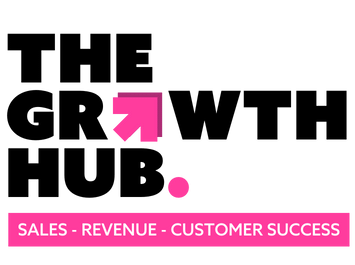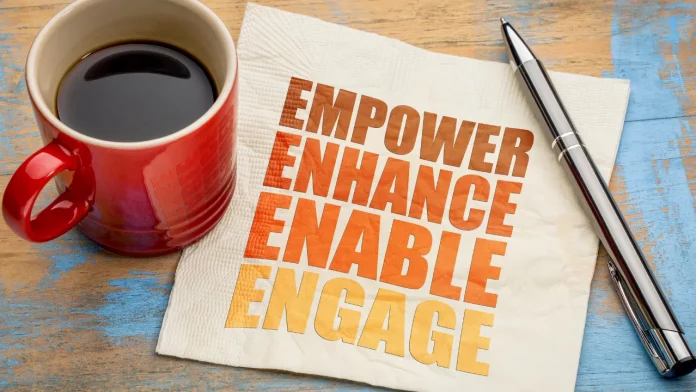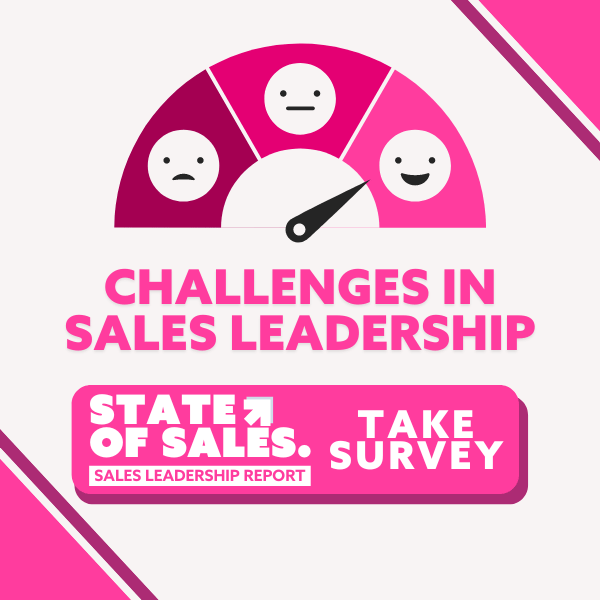Sales enablement is a hot topic for senior sales managers and sales executives around the world, given it can be a key differentiator in gaining an advantage on your competitors.
The concept of sales enablement is relatively simple. It’s the process of providing your sales team with the support, structure, and resources it needs to succeed – from the best tools and technology through to content and more. Put simply, it’s a process that helps your sales team become more efficient and deliver better results.
However, how you actually deliver sales enablement is more of a philosophical or strategic approach than being a specific step-by-step plan. The tactical delivery of sales enablement will differ for each company depending on the size of the business, resources available and the industry they’re in.
But it’s undeniable that what sales enablement offers is crucial in the modern, digital, always-on world. The modern sales rep needs to be able to target the right buyers and successfully engage with them throughout their entire customer journey, navigating their way past any barriers that might prevent smooth interaction and a seamless buying process. This can be achieved by providing content and training that enables sales reps to maintain their expertise.
Why does sales enablement matter?
Sales enablement ensures that your sales team achieves its quota in a scalable, predictable and repeatable manner – which is music to the ears of any sales manager or senior executive. Rather than relying on your top salespeople to bring home the bacon, now you can ensure your entire sales team meet their quota.
All salespeople are provided access to best practices, tools, and resources that they need to become the most successful they can be. And this is vital in the modern business world.
Customers are now smarter and better informed than ever before. Not only that, but they also now have the means to discover information about a product or service at the click of a button without having to talk to your sales team and are increasingly doing their own online desk research.
Your sales team, therefore, needs to be able to provide prospects with something new and information that they aren’t able to access themselves. This is where the role of sales enablement is encouraging a customer-centric approach to selling is crucial. If your sales team can’t prove how your product or service will solve the prospect’s specific issue then they’ll lose interest, so it’s vital to be able to engage with them and build a relationship through having access to the right, most impactful information, resources, and content.
Ensuring salespeople are selling
As the modern business evolves, we’re seeing sales teams increasingly spending less time doing what they’re best at. Research from Seismic finds that 59 per cent of sales reps’ time isn’t spent on selling. Furthermore, 78 per cent of executive buyers believe that sales teams don’t have the relevant marketing materials they require to be effective, and 74 per cent of marketing information goes unused by sales teams.
Sales enablement is crucial to helping businesses of all shape and size enhance their sales operations, and it’s more important now than ever for the following reasons:
Savvy customers: The modern customer is smart and no longer responds to a one-size-fits-all approach. You, therefore, need to align content to key stages of the buyer journey and create a personalised approach that will boost your win rates.
Marketing boosts selling: Marketing helps your sales team provide the right message in the right way at the right time in a manner that works for the specific customer. Sales enablement will, therefore, help your sales team boost their customer engagement levels.
Seller productivity is dwindling: Sales cycles are constantly increasing, which sees your sales team spending too long on non-selling related activities. A sales enablement tool will help you increase efficiency and ensure your salespeople spend as much time as possible doing what they’re best at.
Everything is measured: Sales enablement technology enables you to measure and analyse results to inform sales activity and future deals which, consequently, will increase customer retention rates.
How do I start with sales enablement?
Rolling out sales enablement needs to begin with a deep understanding of who your buyer is and what they want to achieve. It’s all about being customer-centric and helping your sales team to communicate more effectively with customers.
Here are our four key best practices to getting started with sales enablement:
- Define specific objectives: Your sales enablement needs to help your sales team be more effective. To do this, you need to give them everything they need to be able to engage and convert potential customers into buyers. This can be one of many options, from focusing on detailed product or service information to focusing on the development of key sales skills or sharing best practices from top salespeople to inspire the rest of the team.
- Prioritise the buyer experience: This is a vital step in encouraging your sales team to engage their customer. Ensure that salespeople understand who the buyer is, what they’re looking to achieve and the journey on. Then, provide clear sales maps and training to enhance the buying experience.
- Offer high-quality content: Content is vital to the modern sales organisation. Creating insightful, useful blog posts and recording webinars that offer advice and tips for success, for example, will deliver value to your salespeople and enhance your brand image to customers. Ensure your sales teams has access to high-quality content.
- Provide sales training: Sales training should be an ongoing, continuous effort and a major part of any sales enablement program. This is where salespeople learn how to sell more effectively, so providing regular updates and training sessions is key. Failing to provide this increases the chances of your team forgetting what they’ve learned and the content you’ve provided getting lost. Try to run a training session at least monthly and use tools like newsletter and collaboration platforms to keep sales enablement top of mind.
Optimising sales enablement for your business
Your sales team is likely to be diverse, with a mixture of backgrounds, experience, and skill sets. Some of your staff will have the natural ability to sell to customers without any help required, others will need coaching and encouraging. But relying on talent alone is a dangerous game and all salespeople require information that enhances their skills.
This begins with creating detailed buyer personas of your customers, which will help your sales teams to understand their prospects, understand their goals and establish better relationships with their customers.
Whenever a salesperson speaks to any prospect it’s important that they have an understanding of:
- Content that the prospect has previously engaged with
- Which emails they have opened, read, replied to or forwarded
- How many times they’ve visited your website, the pages they’ve visited, how much time they’ve spent looking at it and how recently they last visited
- Information the prospect has previously entered on contact forms
- Any communication they have had with your business, be it on the phone, via email or chat services
Selling is all about human relationships and sales enablement is all about maximising those relationships. It’s easier for your team to sell to someone they know and understand what they’re looking for, what their business pain-points are and what their interests are.
The importance of content
Your content marketing team needs to think and act like a sales team in disguise. Content provides top-of-mind awareness through subtle reminders, such as blogs or even social media posts, that your company is an expert in its field. It could take months or even years before a prospect that sees this content actually becomes a customer, but when they are ready to buy you will be the first one they think of.
The content you create therefore has an important role to play in planting the seed with prospective customers. This then gives your sales team an advantage because the prospect is already comfortable with your company having consumed so much of your content.
Who should own sales enablement?
Sales enablement should be shared between sales and marketing, with a few simple rules that will help you ensure the program has a strong structure.
Both sales and marketing need to collaborate on what resources are required for the sales enablement program, be it content, sales guides or training. Marketing should be responsible for creating most of this information and providing training to the sales team. Sales operations, however, are crucial to making this information actionable for the sales team and ensuring it is put into practice as part of the sales enablement program.
A good rule of thumb to remember here is that, when it comes to sales enablement, marketing is a better creative force and sales is the better enforcer.
Sales enablement is a mindset
Sales enablement can and should be built into your organisation’s mindset or corporate culture. Every area of the business has an interested in the success of sales enablement, so it’s vital it’s implemented in the right way and that salespeople implement the tools and learnings they’re provided throughout the process.
Even the best sales enablement program can quickly die out if no-one pays attention to best practices, tools and content being used, so it’s vital that management enforce their usage and let sales enablement do its magic.




